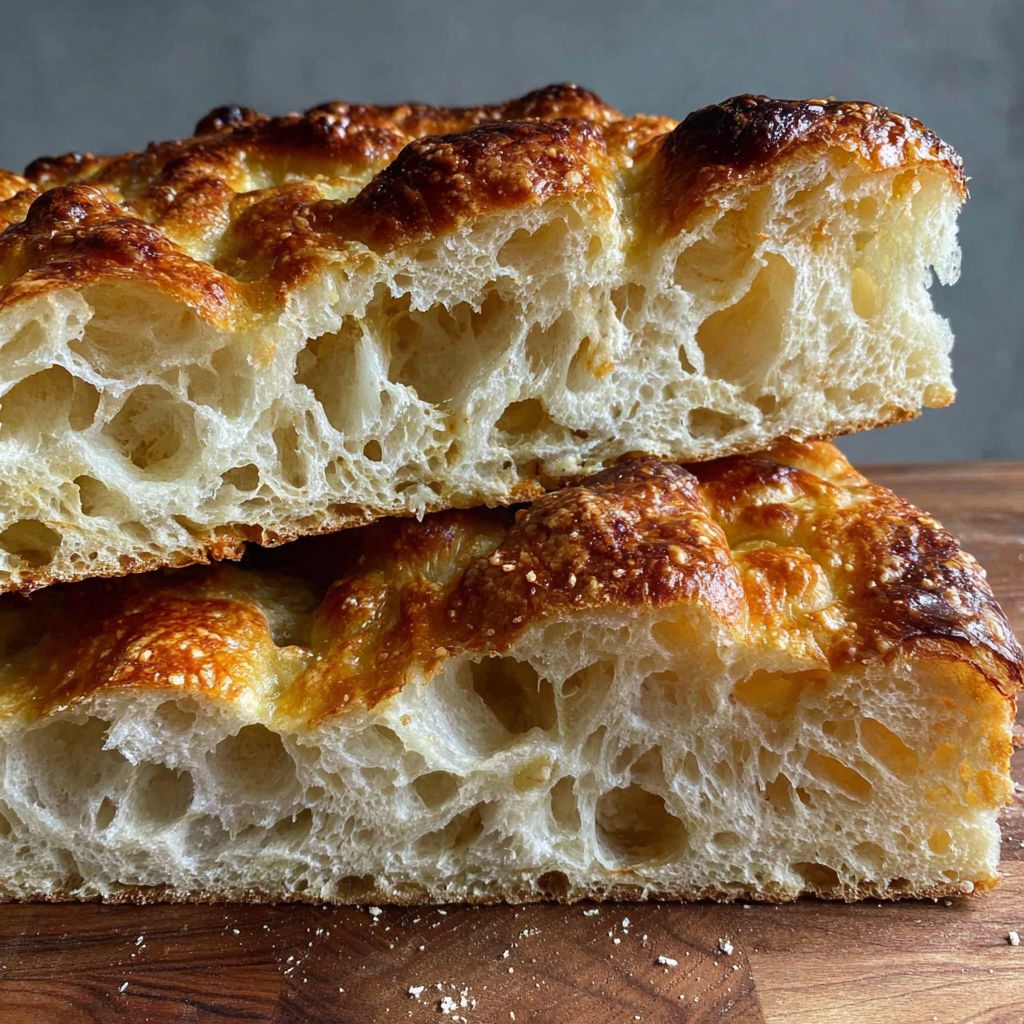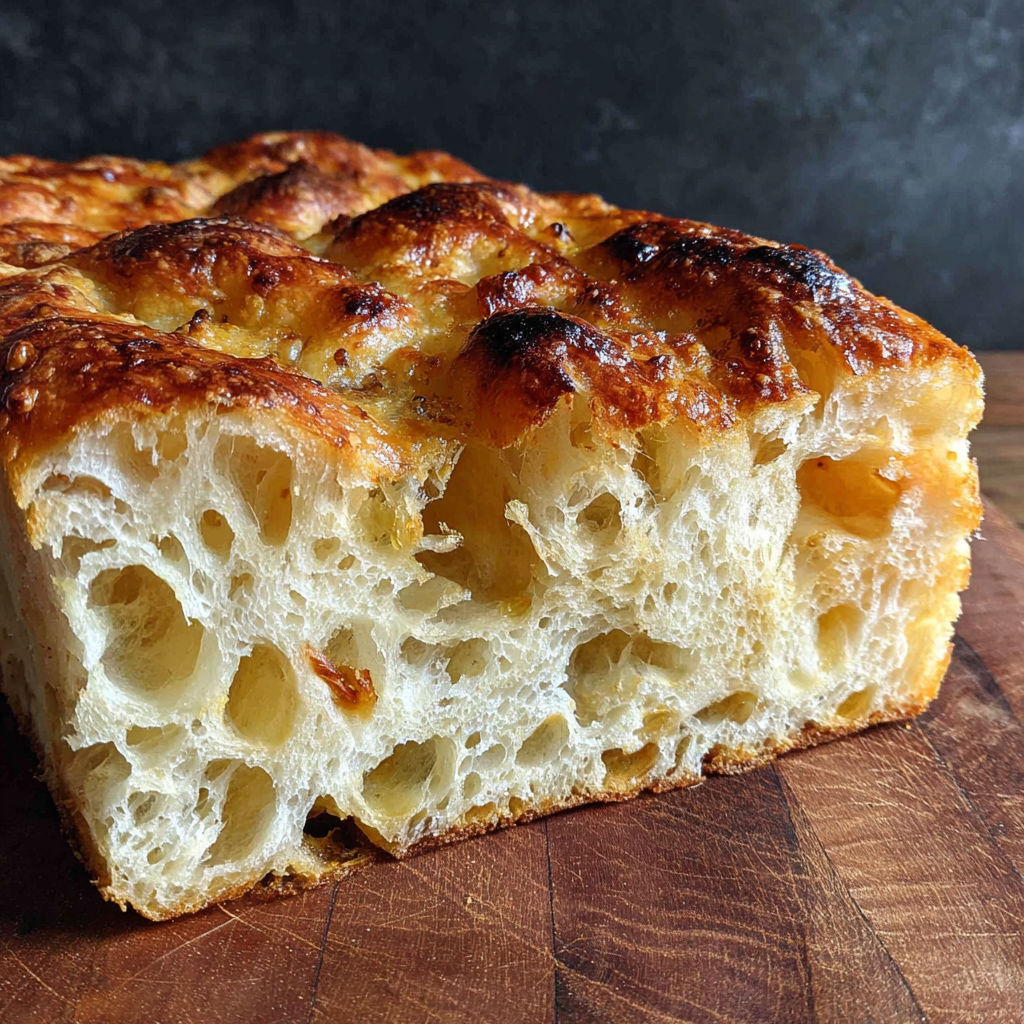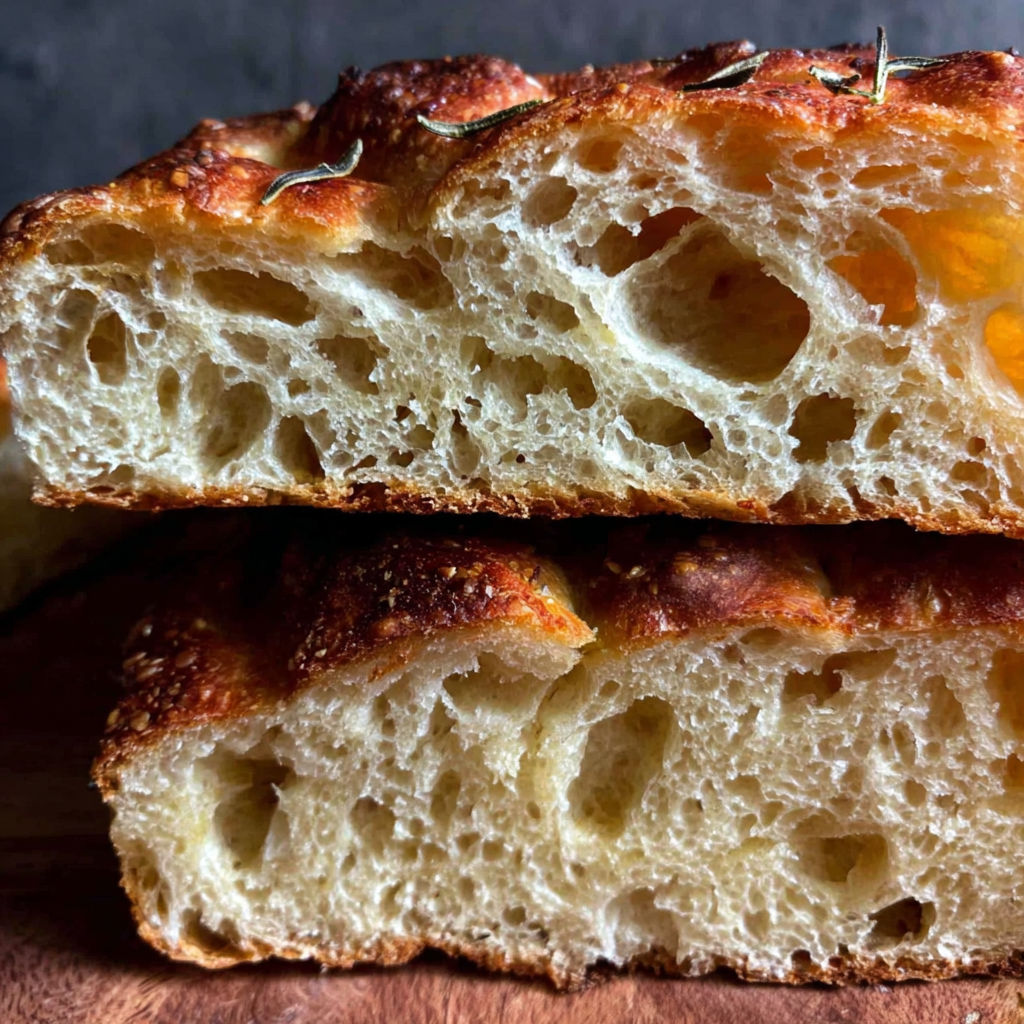 Highlight
Highlight
This thick sourdough focaccia strikes a perfect balance with its soft and fluffy interior contrasted by a satisfyingly crispy crust. The long rise process develops deep flavor and texture, making it ideal for a variety of meals from simple snacks to hearty sandwiches. Whether you enjoy it plain or topped with herbs, this focaccia will quickly become a favorite in your bread-baking rotation.
This recipe became a weekend staple for me when I realized how easy it was to prepare overnight and enjoy fresh bread without a rush. The first time I pulled a golden loaf from the oven, the smell alone convinced me this was keeper.
Gather Your Ingredients
- 125 grams mature sourdough starter: ensuring a lively fermentation and tangy flavor
- 375 grams water: preferably lukewarm to activate the starter without killing it
- 10 grams sugar: to feed the yeast and promote browning in the crust
- 500 grams bread flour: which gives structure and chew; choose high-protein quality for best results
- 15 grams olive oil: adds richness and helps tenderize the crumb
- 10 grams salt: enhances flavor and controls fermentation
- For the topping:
- Olive oil: to drizzle before and after baking for crispness and flavor
- Coarse flaky salt: provides a pleasant salty crunch on top
- Fresh or dried rosemary: infuses the bread with aromatic herb notes
How to Make It
- Mix the Dough:
- Combine mature sourdough starter, sugar, water, and bread flour in a large bowl until it forms a rough, shaggy dough. Cover and place in a warm spot for about one hour to begin fermentation. This rest allows the flour to hydrate fully and jumpstarts gluten development.
- Add Salt and Olive Oil:
- After the initial hour, add salt and olive oil. Incorporate the salt and oil thoroughly by scrunching and folding the dough with your fingers. This gentle handling builds structure without tearing. It may feel sticky at first but keep folding until fully combined.
- First Rise with Stretch and Fold:
- Transfer the dough to a covered container in a warm place for about 1.5 hours. Every 30 minutes, perform a stretch and fold: gently pull one side of the dough up and fold it over the other side, rotating the bowl. This strengthens the dough gluten network and improves the rise.
- Prepare for Final Rise:
- Oil your baking sheet or line with parchment paper to prevent sticking. Gently spread the dough onto the sheet; the dough will naturally spread but you can help by lightly stretching it with your fingers. Cover and let rest at room temperature for 3 to 4 hours until bubbly and airy.
- Alternative Refrigerated Rise:
- Instead of the warm final rise, place the dough covered loosely with oiled plastic wrap in the refrigerator overnight or up to 2 or 3 days. This slow fermentation develops more flavor. The focaccia can be baked directly from chilled.
- Preheat Oven and Prepare to Bake:
- Heat your oven to 450 degrees Fahrenheit, placing a baking stone or steel in the center rack if you have one. This ensures a hot surface for a crisp bottom crust.
- Dimple and Top:
- Before baking, press your fingers repeatedly all over the dough deeply creating dimples. This traps olive oil and toppings in the pockets. Drizzle olive oil generously, sprinkle coarse salt, and scatter rosemary or your favorite toppings evenly.
- Bake Until Golden Crispy:
- Place the baking sheet directly on the hot stone or in the oven’s bottom third if no stone is used. Bake for about 20 minutes until the focaccia is golden on top and the bottom feels crispy when lifted.
- Finish with Olive Oil:
- Once out of the oven, drizzle more olive oil on top to keep the crust moist and add shine.

My favorite ingredient here is the mature sourdough starter. It brings a subtle tang and complexity that you simply can’t replicate with commercial yeast. One memorable moment was serving this focaccia to friends who immediately remarked on its perfect texture and fresh, herbaceous aroma. It never fails to impress.
Flavor Boosters
Enjoy warm from the oven with a drizzle of good olive oil or alongside soups and salads. Sliced focaccia makes delicious sandwiches or can be torn into pieces for dipping in olive oil and balsamic vinegar.
Serving Suggestions
In spring and summer, fresh rosemary or basil shine as toppings. In autumn or winter, try caramelized onions or olives to add depth. Experiment with seasonal vegetables thinly sliced and pressed into the dough before baking.
Creative Twists
Using a well-maintained starter and quality bread flour really makes a difference in texture and flavor. I always recommend fresh olive oil and fresh herbs if possible for the best aroma.

This focaccia recipe strikes an excellent balance of flavor and texture that rewards patience and simple ingredients. It’s perfect for bakers of all levels looking to elevate their bread-making skills.
Common Questions About the Recipe
- → What gives the focaccia its crispy crust?
Baking the focaccia on a preheated baking stone or steel helps develop a crispy bottom crust, while olive oil drizzled on top adds to the crisp texture.
- → How does the long rise affect the texture?
The extended rise allows fermentation to enhance the dough’s flavor and creates an airy, soft interior contrasting with the crispy crust.
- → Can I use different toppings?
Yes, toppings are versatile — fresh herbs like rosemary, coarse salt, or even tomatoes and olives can be used to customize the focaccia.
- → Is it necessary to dimple the dough before baking?
Pressing dimples into the dough helps retain pockets of olive oil and prevents large air bubbles, resulting in an even crumb and enhanced flavor.
- → Can I refrigerate the dough before baking?
Yes, refrigerating the dough overnight slows fermentation, improves flavor, and makes it easier to bake the focaccia later.
